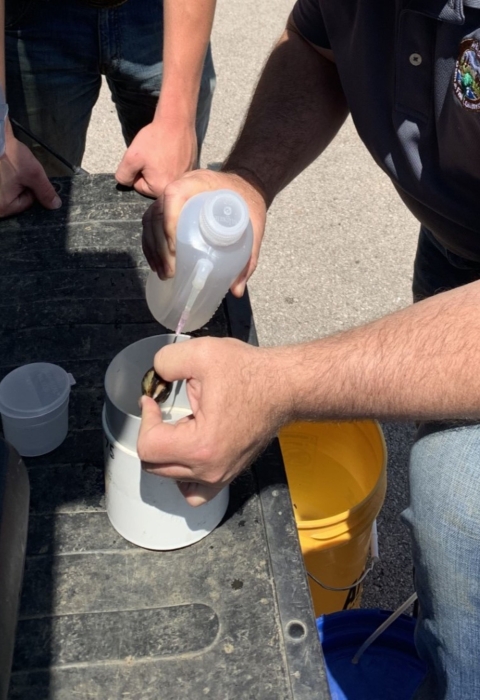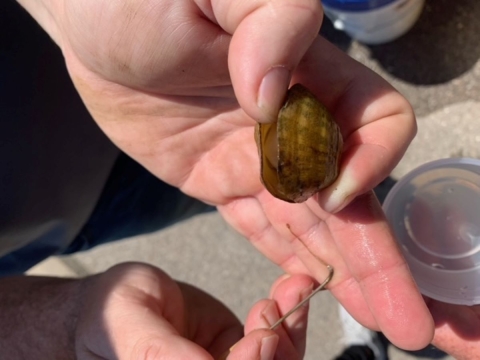The Norfork National Fish Hatchery has been raising mussels for several years, but this year, another species was added to the mix. The Western Fanshell was just designated a threatened status last year, and is now part of Norfork's mussel propagation efforts. This mussel is found in the Lower Mississippi, St. Francis, Neosho Verdigris, and Upper White River basins in Arkansas, Kansas, Missouri, and Oklahoma. Effective in July of 2023, it is now listed as a threatened species. We are very excited to play our part in this species recovery.
Since we haven't propagated this species before, it seems fitting to relay some information about the mussel itself. Western Fanshells are medium sized mussels. Like other mussels, they are filter feeders that feed on things like phytoplankton, zooplankton, detritus, etc. They also have the larval stage known as glochidia. The Western Fanshell is bradytictic, meaning long term brooder. In the fall males release sperm to fertilize eggs in the females. This sperm is broadcast into the stream and can travel long distances. Eggs are housed inside the marsupial gills of the female mussels and develop into larvae. The glochidia are stored within worm-like structures called conglutinates. In the spring, the conglutinates function as a sort of lure. When a host fish tries to take a bite of the conglutinate, it bursts, releasing the larvae. The glochidia attach to the gills and stay there until they fall off into the substrate where they begin their filter feeding lives. The Western Fanshell is known to be host specific. Rainbow darters, Fantail darters, and logperch are a few examples of suitable species.
On May 1st, Dr. Ken Moles of the Arkansas Game and Fish came to infest host fish with Western Fanshell glochidia. We had been holding brood mussels in Norfork Lake since last fall. A week prior to Dr. Moles arrival, we acquired rainbow darters for host fish purposes. These darters were batch infested. This was done by mixing glochidia in a bucket with the darters and running a bubbler for about 30 minutes. After the darters were infested , they were placed in cages and the wait began. With any luck, this story will lead to a new story later down the road; one where we get to share our Western Fanshell success and the impact our propagation efforts have had on some of our dwindling mussel species.
Propagating a "new to us" Species: The Western Fanshell




